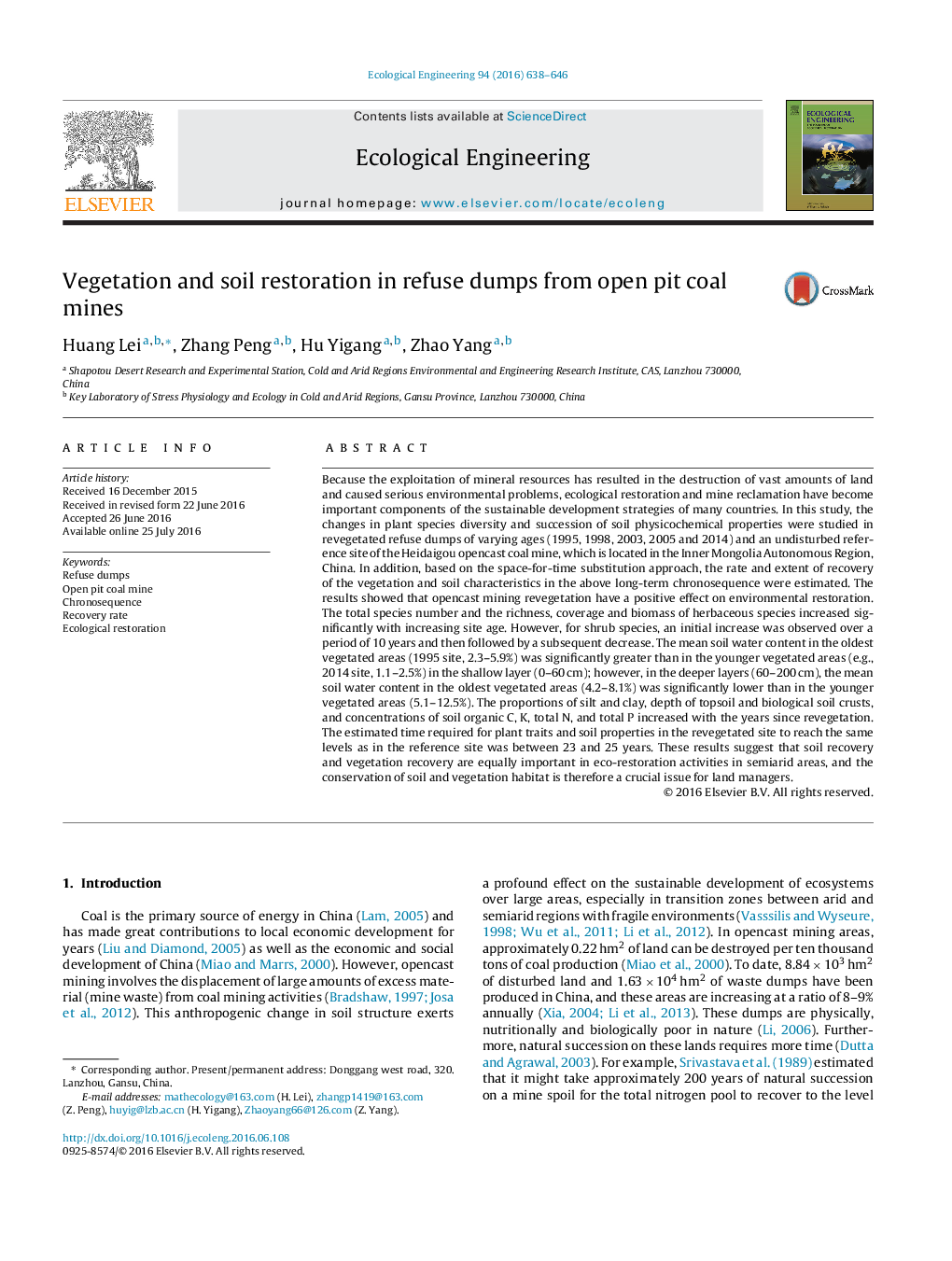| کد مقاله | کد نشریه | سال انتشار | مقاله انگلیسی | نسخه تمام متن |
|---|---|---|---|---|
| 4388593 | 1618005 | 2016 | 9 صفحه PDF | دانلود رایگان |
• Opencast mining revegetation have a positive effect on environmental restoration.
• Long-term changes of vegetation characters and soil properties were studied.
• Recovery rate of topsoil and vegetation characteristics were estimated.
• Soil recovery and vegetation recovery are equally important in semiarid areas.
Because the exploitation of mineral resources has resulted in the destruction of vast amounts of land and caused serious environmental problems, ecological restoration and mine reclamation have become important components of the sustainable development strategies of many countries. In this study, the changes in plant species diversity and succession of soil physicochemical properties were studied in revegetated refuse dumps of varying ages (1995, 1998, 2003, 2005 and 2014) and an undisturbed reference site of the Heidaigou opencast coal mine, which is located in the Inner Mongolia Autonomous Region, China. In addition, based on the space-for-time substitution approach, the rate and extent of recovery of the vegetation and soil characteristics in the above long-term chronosequence were estimated. The results showed that opencast mining revegetation have a positive effect on environmental restoration. The total species number and the richness, coverage and biomass of herbaceous species increased significantly with increasing site age. However, for shrub species, an initial increase was observed over a period of 10 years and then followed by a subsequent decrease. The mean soil water content in the oldest vegetated areas (1995 site, 2.3–5.9%) was significantly greater than in the younger vegetated areas (e.g., 2014 site, 1.1–2.5%) in the shallow layer (0–60 cm); however, in the deeper layers (60–200 cm), the mean soil water content in the oldest vegetated areas (4.2–8.1%) was significantly lower than in the younger vegetated areas (5.1–12.5%). The proportions of silt and clay, depth of topsoil and biological soil crusts, and concentrations of soil organic C, K, total N, and total P increased with the years since revegetation. The estimated time required for plant traits and soil properties in the revegetated site to reach the same levels as in the reference site was between 23 and 25 years. These results suggest that soil recovery and vegetation recovery are equally important in eco-restoration activities in semiarid areas, and the conservation of soil and vegetation habitat is therefore a crucial issue for land managers.
Journal: Ecological Engineering - Volume 94, September 2016, Pages 638–646
